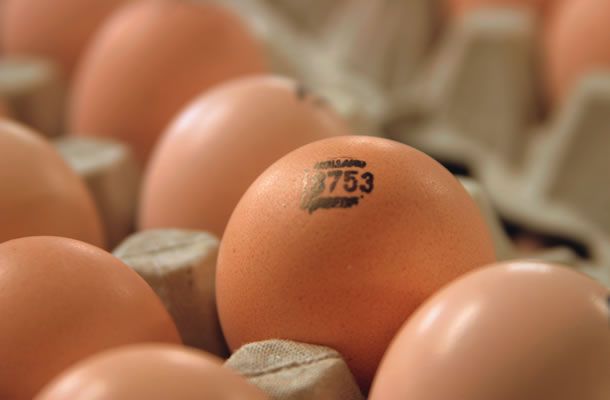Storage of hatching eggs
Tags: Egg handling | Whitepaper
, August 27 2010

Egg storage is the time between oviposition (laying) and the start of the incubation process for hatching eggs. Optimal hatching results and chick quality can be achieved if eggs are set after an initial adaptation period of about 1 to 2 day(s). This allows carbon dioxide to be released from the egg, which increases albumen pH from 7.6 at oviposition to pH8.8 - 9.3. Yolk pH remains virtually constant around pH6.5, so that the embryo, situated on the yolk, is exposed to a pH-gradient. This optimises early embryonic development.
Storing eggs beyond two days leads to loss of hatchability and reduced chick quality. An epidemiological study of Dutch hatchery data (Yassin et al. 2008) showed that, on average, each extra day of storage at the hatchery before the seventh day reduced hatchability by 0.2%, rising to 0.5% after the seventh day.
Day-old-chicks from stored eggs show a higher incidence of ‘black navels’. Tona et al. (2004) found that Cobb broiler chicks hatched from eggs stored for seven days weighed over 200 grams less at slaughter age, than chicks from fresh eggs. Differences in body weights emerged at 14 days post hatch and increased until slaughter age at 42 days.
In recent research by Pas Reform Academy, eggs from three different broiler breeder flocks of different maternal ages (30, 38 and 50 weeks) were stored at 18 - 20 ˚C and 12 - 14 ˚C for 7 and 11 days, both at 75% relative humidity. Storage at the lower temperature resulted in a higher average hatchability of 0.6% (experiment 1: 7 days), 1.1% (experiment 2: 7 days) and 3.2% (experiment 3: 11 days). These results support the view that ‘the longer the storage period, the lower the storage temperature’, but more research is needed before it can be concluded that suggested temperature ranges should change.
Advice
- Allow eggs to cool gradually, from the hen’s body temperature to between 18 - 25 ˚C in 6 - 8 hours; do not place them in storage (especially not if already placed on setter trays) too quickly after lay.
- Minimize the duration of storage to counter negative effects.
- Be aware that storage starts on the day of egg production, not necessarily the same as the date of receipt at the hatchery.
- Label each batch of eggs with its actual date of production.
- Maintain optimal climatic conditions during storage (see table), taking the planned duration of storage into consideration.
- Consider having two separate storage rooms, each with specific climate conditions, if storage time is not constant.
- Store eggs small end up, starting on the first day of storage, if hatchery planning dictates that eggs must be stored more than 10 days. Alternatively, if eggs are stored on setter trays (blunt ends up), turn them 90° once daily.
- Choose the upper limit of recommended temperature ranges if there is a risk of ‘sweating’ when eggs are removed from storage. Gradual warming in a ‘pre-processing room’ at an intermediate temperature may be necessary.
- Position eggs in storage to avoid direct air flow from egg room coolers and/or humidifiers - and sufficiently removed from the heating system.
- Do not place eggs directly against the wall or on the floor in the storage room.
- Allow extra incubation time for stored eggs: on average one hour extra for each additional day after an initial storage period of three days.
| Storage duration | Temperature (˚C) | Relative humidity (%) |
| 0 - 3 days | 18 - 21 | 75 |
| 4 - 7 days | 15 - 17 | 75 |
| 8 - 10 days | 10 - 12 | 80 - 88 |
| More than 10 days | 10 - 12 | 80 - 88 |